by John Semlak | Dec 3, 2017 | #ONTHISDAY
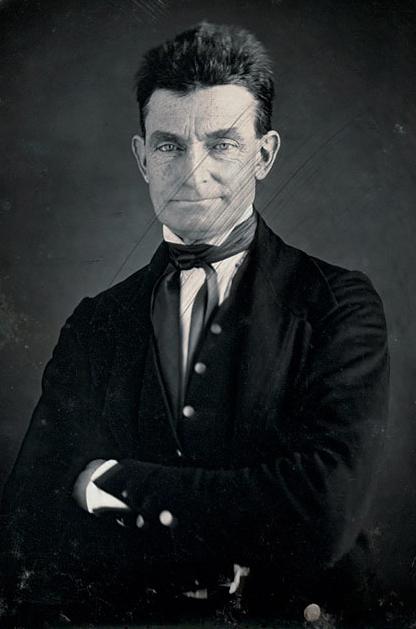 John Brown
John Brown
On the evening of December 3rd, 1859, a steamboat arrived from Philadelphia. On board was Theodore Tilton, a Brooklyn abolitionist and friend and colleague of Henry Ward Beecher. The ship carried the body of abolitionist John Brown, executed by hanging the previous day in Charles Town Virginia for his armed raid at Harper’s Ferry. The body was taken to an undertaker at 163 Bowery, McGraw and Taylor. A Quaker named Jacob Hopper dressed the body, along with Charley Carpenter, a sexton at St. Marks Church in the Bowery. The next day, word got out of the presence of John Brown’s body, and many onlookers came to get a glimpse of this figure. Brown was then shipped up the Hudson River to North Elba, New York, where he was buried.
Brown was considered a hero by many abolitionists and freed slaves, and praised in eulogies by Henry David Thoreau and Ralph Waldo Emerson. He was also vilified by many, especially in the South. His raid and execution contributed to the tensions that led to the American Civil War less than two years later.
by John Semlak | Nov 6, 2017 | #NYCSports, #ONTHISDAY, #SportsHistory
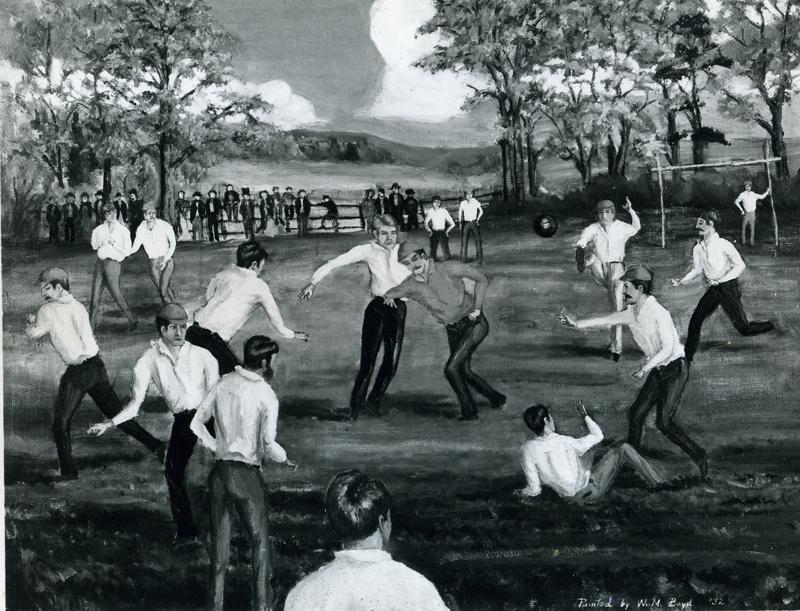 Painting of the match by Rutgers graduate William Boyd
Painting of the match by Rutgers graduate William Boyd
On November 6th 1869 at College Field on the campus of Rutgers University in New Jersey, two teams from Rutgers and the College of New Jersey (today Princeton) met each other to play a match under the London Football Association rules. The teams were 25 players each and they wore no uniforms. The rules resembled soccer more than college football–the players were not allowed to carry or throw the ball. Teams scored a goal (also called a ‘run’ in newspaper reports) by kicking the ball into a goal. Rutgers won 6-4. It was the first of two games Rutgers and Princeton played in 1869 in the first ever college football season.
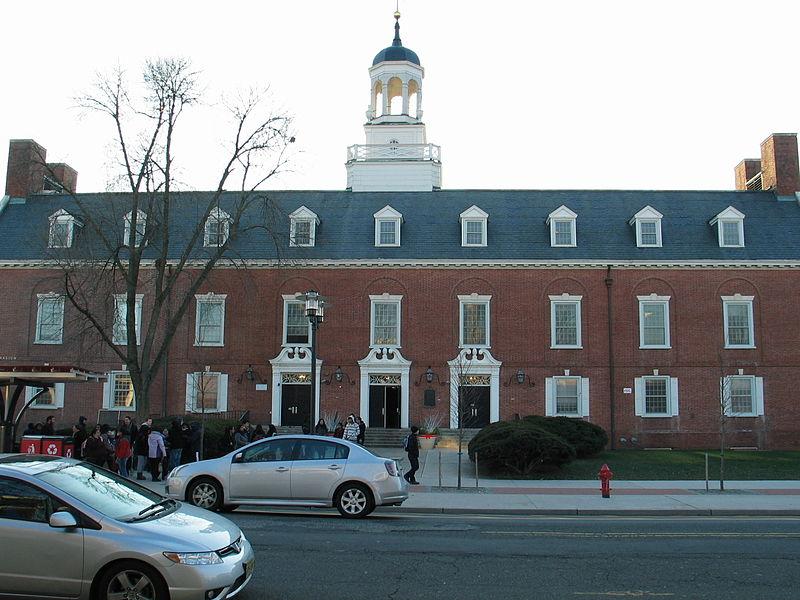 College Avenue Gymnasium, site of the match
College Avenue Gymnasium, site of the match
In 1870 Rutgers would play Columbia College in another game under similar rules. However, in 1874 Canada’s McGill University and Harvard played each other in a game under rules of the ‘Boston game,’ which were derived from the Rugby Football Union in England and allowed carrying the ball. From there, the college football would evolve into the rules of the gridiron played today. Nevertheless, the Rutgers-Princeton match in 1869 is considered the ‘Birth of College Football’.
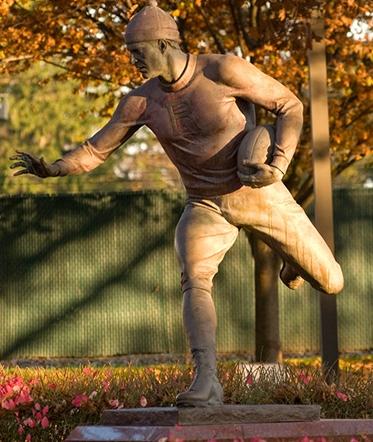 The First Football Game Monument at High Point Solutions Stadium (photo from Rutgers University website)
The First Football Game Monument at High Point Solutions Stadium (photo from Rutgers University website)
The site of the match is now Rutgers’ College Avenue Gymnasium, which now has a plaque depicting the Rutgers players in the match. A statue entitled The First Football Game Monument stands outside Rutgers’ current home High Point Solutions Stadium, though it inaccurately depicts a player carrying the ball.
by John Semlak | Oct 5, 2017 | #NYCSports, #ONTHISDAY
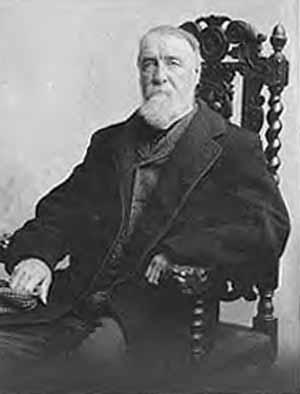 Henry Chadwick
Henry Chadwick
English journalist and sports-writer Henry Chadwick was born on October 5th, 1824 in Exeter England. He emigrated to the US at the age of 12 with his family and settled in Brooklyn. He found work as a journalist covering sports and was especially fond of cricket. He first saw a baseball game while covering cricket for the New York Times in 1856 and developed a life-long passion for the game. Working for various papers, he developed the box score, the terms ERA and Batting Average, and other scorekeeping tools still used today. When he died in 1908 he was credited as the ‘father of baseball’, though he is one of several persons who can credibly claim this title. His grave at Green-Wood Cemetery in Brooklyn is a must-see for baseball lovers.
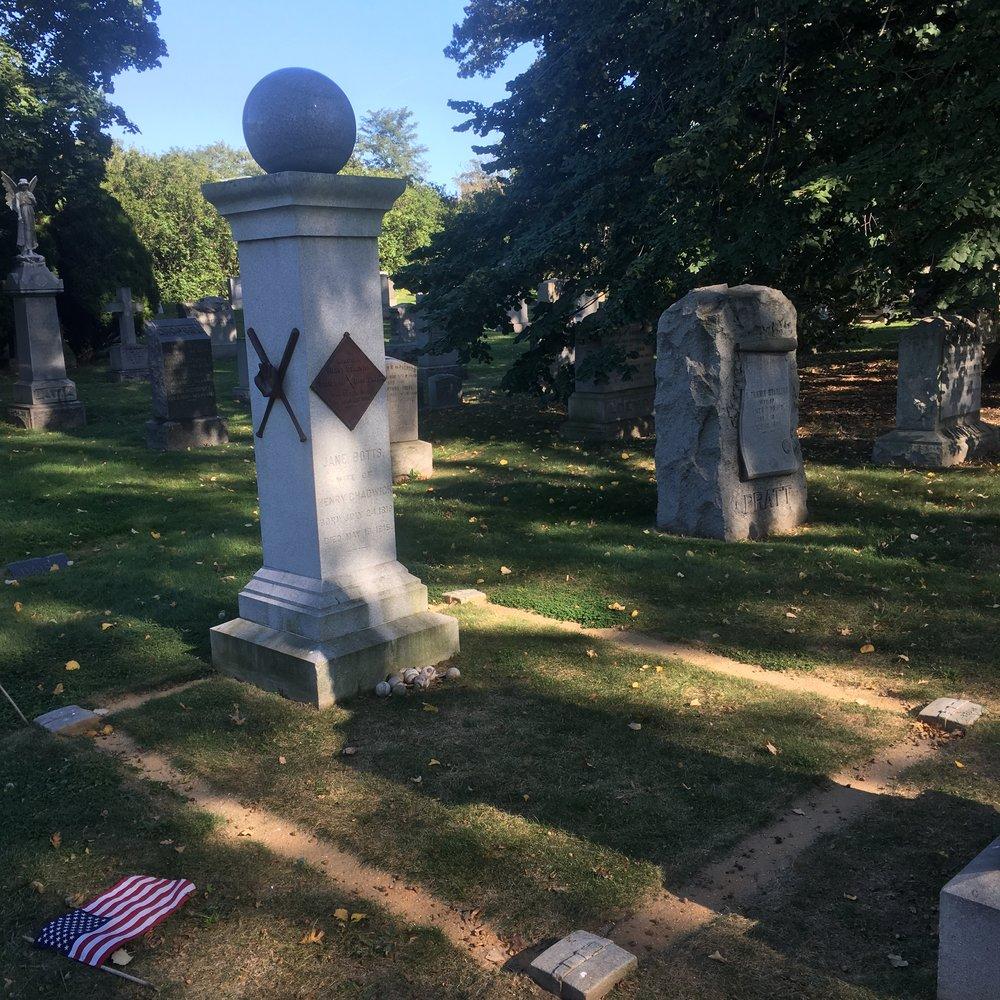 Chadwick’s grave in Green-Wood Cemetery, with a baseball carved on the headstone.
Chadwick’s grave in Green-Wood Cemetery, with a baseball carved on the headstone.
by John Semlak | Oct 4, 2017 | #NYCSports, #ONTHISDAY
 England playing the United States in Hoboken
England playing the United States in Hoboken 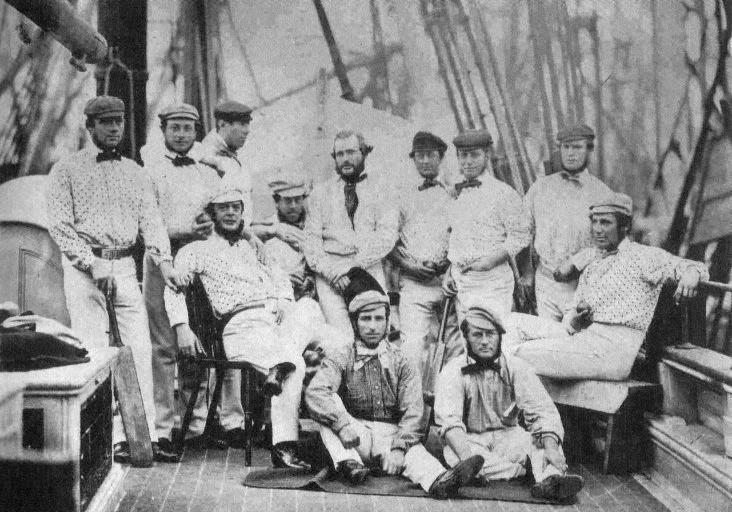 The English team on a ship in Liverpool on their way across the Atlantic
The English team on a ship in Liverpool on their way across the Atlantic
On October 3rd, 1859, a team of 11 English cricketers and a team of 22 cricketers from New York began a 3-day cricket match at the Elysian Fields in Hoboken, New Jersey. The English team was on a tour of North America and played five matches in Canada and the US. It was the first ever overseas tour of the English cricket team, and 18 years before the first England-Australia test match in Melbourne. The English won all five matches, including the one in Hoboken.
The match in Hoboken was played at the home ground of the St. George’s Cricket Club, the most dominant cricket club in the New York area. Founded in 1838, they first started playing in Manhattan at various grounds before moving to Hoboken, using a site very near the field used by the Knickerbocker Baseball Club at the time. The team of 22 players (the American team was allowed to have two sets of the 11 players normally required to play cricket as an advantage) drawn from the St George club and other cricket clubs in the area, such as the New York Cricket Club or the Union Star club in Brooklyn. Players for the US team, many who were of English birth, included Sam Wright, his son and future baseball player and hall-of-famer Harry Wright, and glass-maker Henry E. Sharp. The English won the match easily, scoring 156 runs to the US’s 92. The English only had to bat for one innings to score more runs than the Americans did in two innings, equivalent to scoring more points in a single half of a basketball game than their opponent scored the whole game.
The poor result for US cricket during tour did not limit excitement around the matches. They were well attended and covered in the press, and the attention increased the interest in cricket which was then a strong rival to baseball in popularity in the US. A second English tour was planned. However, the Civil War put an end to this. After the war, baseball became the dominant sport in the US and cricket never recovered.
by John Semlak | Aug 8, 2017 | #ONTHISDAY
In the early 1850s, photographer Mathew Brady ook a now-famous picture of seven members of the staff of the New York Tribune, then one of the country’s most powerful newspapers. The men were among the most important American journalists of the 19th century. Seated in the center is Tribune founder Horace Greeley. Standing right is Henry J. Raymond, founder of the New York Times. And standing in the middle is Charles Anderson Dana, later editor for 29 years of the New York Sun. He was born on this day on August 8th, 1819.
 Mathew Brady photograph of the staff of the New York Tribune c. 1850. Dana is standing in the middle.
Mathew Brady photograph of the staff of the New York Tribune c. 1850. Dana is standing in the middle.
Like his later colleague Horace Greeley, Dana was born in New Hampshire but moved to New York to work in journalism. He worked for various newspapers before joining the Tribune in 1847. He traveled to Europe as a correspondent and met with sometimes Tribune writer Karl Marx. He also helped promote the Tribune’s anti-slavery and later pro-Republican stances. (Later in his life Dana would express some racist views).
After supporting Abraham Lincoln’s presidential bid, be joined the administration as Assistant Secretary of War from 1863-65. In this position e came in to frequent contact with future president Ulysses Grant, and play a significant role in Grant’s rise to become the Union’s top general.
 The Charles A. Dana Discovery Center in Central Park. It opened in 1993 and named after Dana.
The Charles A. Dana Discovery Center in Central Park. It opened in 1993 and named after Dana.
After the war, Dana went back into journalism and eventually became the editor and part owner of the New York sun newspaper after the war, Dana went back into journalism and eventually became the editor and part-owner of the New York Sun, a position he held until the end of his life. During his editorship he switched the sun from a Republican-leaning paper to a Democratic-leaning one. After supporting Grant as a candidate the paper became a harsh critic of his administration. Late in his tenure the Sun published the famous “Yes, there is a Santa Claus!” editorial.
by John Semlak | Aug 7, 2017 | #ONTHISDAY

On August 6 1926 Gertrude Ederle, born in Manhattan in 1905, swam across the English Channel at a then record time of 14 hours and 34 minutes, two hours faster than any person had done so previously. She was the first woman ever to do so. She returned to New York and was awarded with a ticker-tape parade on Broadway. She was known as the ‘Queen of the Waves.’
 John Brown
John Brown Painting of the match by Rutgers graduate William Boyd
Painting of the match by Rutgers graduate William Boyd College Avenue Gymnasium, site of the match
College Avenue Gymnasium, site of the match The First Football Game Monument at High Point Solutions Stadium (photo from Rutgers University website)
The First Football Game Monument at High Point Solutions Stadium (photo from Rutgers University website) Henry Chadwick
Henry Chadwick Chadwick’s grave in Green-Wood Cemetery, with a baseball carved on the headstone.
Chadwick’s grave in Green-Wood Cemetery, with a baseball carved on the headstone. England playing the United States in Hoboken
England playing the United States in Hoboken  The English team on a ship in Liverpool on their way across the Atlantic
The English team on a ship in Liverpool on their way across the Atlantic Mathew Brady photograph of the staff of the New York Tribune c. 1850. Dana is standing in the middle.
Mathew Brady photograph of the staff of the New York Tribune c. 1850. Dana is standing in the middle. The Charles A. Dana Discovery Center in Central Park. It opened in 1993 and named after Dana.
The Charles A. Dana Discovery Center in Central Park. It opened in 1993 and named after Dana.